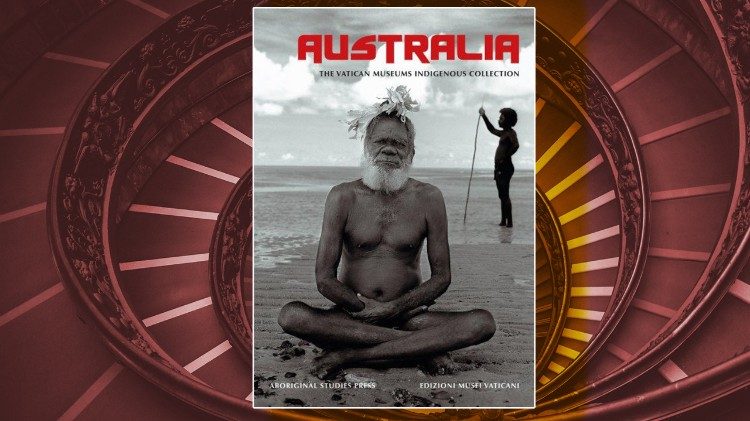
New Vatican publication highlights history and culture of Australian indigenous peoples
By Linda Bordoni
Six years after the inauguration of the new permanent exhibition dedicated to Australia within the Vatican Museum’s Anima Mundi Section, a significant event took place on Tuesday in the history of the Museums and its mission to build bridges between peoples.
The event in question was the launch of “Australia. The Vatican Museums indigenous collection” catalogue, co-published by the Aboriginal Studies Press and by the Museums Publishing house.
The volume, curated by Katherine Aigner, in English and Italian, is the third in a series of texts on the ethnological collections of the ��MAP����’s Museums.
It begins with the history of the creation of the Collection, which now comprises around 300 pieces whose origins date back to the first donations made to Pius XI by the Aborigines of Australia.
As Craig Ritchie, Deputy Chief Executive of the Australian Institute of Aboriginal and Torres Strait Islander Studies’ explained to Linda Bordoni, “reconnection” is the key word of this innovative publication:
Ritchie expressed his satisfaction and appreciation for what he described as a “joint effort that highlights the Australian indigenous items the Museum has” and in particular, said it is “an exciting opportunity to highlight the very long and very ancient culture of Australia’s indigenous peoples”.
Of course the “Ethnological Museum” dedicated to the cultural, artistic and spiritual traditions of all peoples is an integral part of the Vatican Museums and the Australian “Anima Mundi” section represents a component in the complex mosaic of humanity, but Ritchie said “It’s the first time it’s been put into publication and this makes it available to a much wider audience.
He also recalled the important history behind the Ethnological Museum and its important message to the world.
History of the ‘Anima Mundi’ Museum
He explained that ��MAP���� Pius XI, in the years between the two World Wars, asked for items from various civilizations around the world, where the Church had missions, to be sent to Rome.
“Because in the face of rising fascism in Europe, between the ‘20s and the ‘30s, and particularly with its very racist element and the idea that only Europe had civilization, it was an important thing to do to show that there are civilizations all around the world” he said.
Ritchie remarked on the fact that in Australia, for example, Aboriginal and Torres Strait Islanders have been living for 65,000 years – “that’s not a short period” – with deeply sophisticated cultures and values and ideas.
“So, he said, it’s important that we find ways to communicate that - then and now”.
An important message today
Ritchie said he believes that it has become ever more urgent to communicate the message “that we all share the one planet, and the idea that all cultures and all people have value is really important”.
He said that it is a mind blowing and life changing experience to visit the collections and really experience the power of the history and the heritage of humanity.
“Something wonderful happens when you bring people together and they understand the world” he said, and “there’s no more powerful place to do that than in the Vatican in Rome”
Ritchie explained that the new Catalogue lists all the artifacts and art work that are part of the collection. He said they come from three parts of Australia and constitute a varied representation of Australia’s indigenous people.
“There were over 300 indigenous nations on the continent at the time the British arrived in 1788” he said.
He described the collection as very diverse and very rich and able to really offer a wide perspective and new appreciation.
“We’re part of the oldest living culture on the face of the earth” he said.
Of central importance in drawing up the catalogue is the intent to highlight diversity in accordance with the philosophy of “reconnection” that characterizes both the recent history of the Australian territory and the section of the Vatican Museums that houses the ethnological collections.
Ritchie also talks about working with Vatican administration and about how a very ancient tradition and a very innovative outlook managed to find a way to collaborate fruitfully and work together.
Describing it as “complex but rewarding”, Ritchie concludes it has been one of the most positive experiences he has ever been part of!
Thank you for reading our article. You can keep up-to-date by subscribing to our daily newsletter. Just click here






